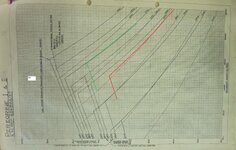Admiral Beez
Major
There is no better choice than the RR Merlin. But if the Hispano-Suiza 12Y was pushed upon us, it could be worked over into the more powerful Hispano-Suiza 12Z. And earlier on, the Soviets worked over the Hispano-Suiza 12Y to get to the Klimov VK-107. Other Hispano-Suiza products were produced by the Allies under license, including the HS.404 cannon produced by International Harvester.No, definitely not a better option. It had lower power output than the Allison and it was not produced by either the USA or Britain, so, bad idea. The Mustang would have been slower and had poorer performance with an engine that no one wanted.
Interestingly, Mitsubishi had acquired a license in 1935 for Hispano-Suiza engines, in this case a W-18.
Last edited:

